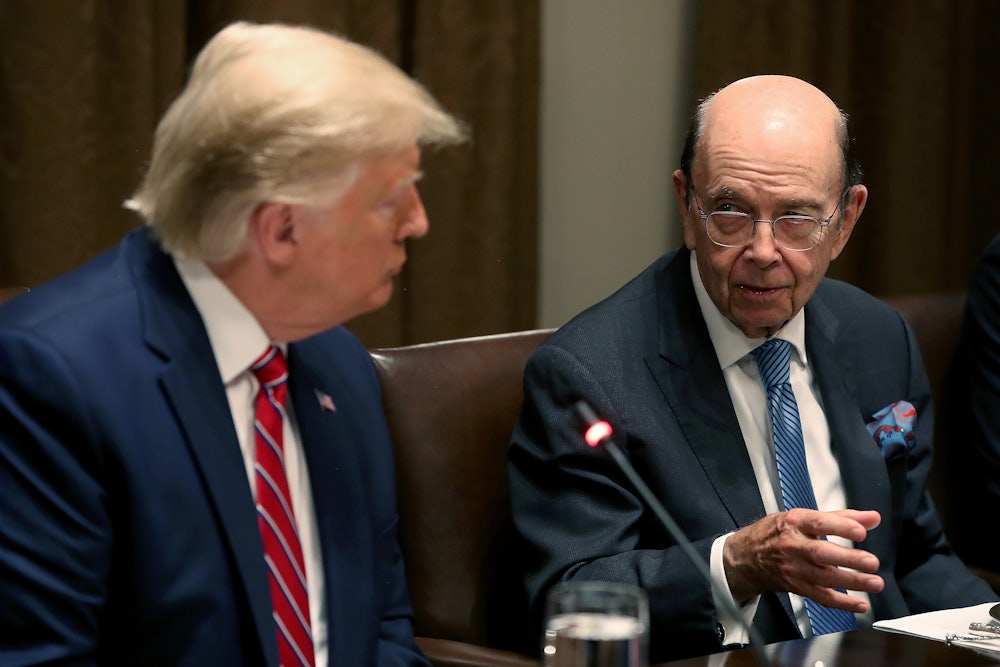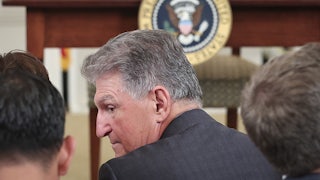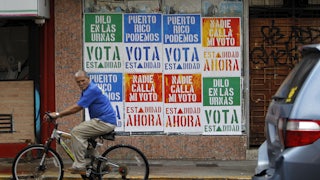Every 10 years, the Census Bureau tries to count every person in the United States. While the Constitution grants many powers to the federal government, conducting the census is one of the few things that it explicitly commands. The once-in-a-decade count is required to reapportion the House of Representatives to reflect changes in the nation’s population. Since House districts are used to apportion the Electoral College and states use census data to reapportion their own legislatures, the census quite literally rewrites the map of American political power every 10 years.
The Trump administration wanted to do things a little differently for the 2020 census. Secretary of Commerce Wilbur Ross tried to add a citizenship question to the portion that everyone is asked to complete, claiming that the Justice Department had requested it to enforce the Voting Rights Act of 1965. A small army of critics argued that it would reduce participation by noncitizens, which would undermine the census’s accuracy and warp the landscape of American politics. The Supreme Court effectively blocked the question in a 2019 ruling.
Earlier this week, the House Oversight Committee obtained a cache of documents from the Department of Commerce that show just how far the Trump administration wanted to go to corrupt the census in its favor. Taken together, the documents offer three useful insights into how Trump-aligned conservatives approach political power and the law.
First, the documents confirm that the Trump administration tried to manipulate the 2020 census for electoral gain and misled the public and Congress about it. The House Oversight report singles out Ross for untruthful testimony that he gave about the reason he wanted to add a citizenship question. It also found that, contrary to Ross’s testimony, he had steered the Justice Department into the Voting Rights Act–enforcement pretext instead of simply complying with an independent request it had made.
“When Secretary Ross testified before the Oversight Committee in 2019, he denied that his interest in adding a citizenship question to the census had anything to do with counting undocumented immigrants for apportionment purposes,” the report stated. “However, documents obtained by the Committee show that he requested and received a detailed memorandum exploring the legality of adding a citizenship question to the census for the purpose of apportionment, along with other potential rationales.”
Second, the documents show that Chief Justice John Roberts saved the Supreme Court from, in legal parlance, getting played like a bunch of suckers. In its 2019 ruling on the citizenship question, in Department of Commerce v. New York, the court ruled that there was no constitutional barrier to asking about citizenship during the decennial census. At the same time, it effectively blocked the citizenship question on the 2020 census because Ross’s stated justification for the question—to help enforce the Voting Rights Act of 1965 at the Justice Department’s request—did not match the evidentiary record provided in the lower courts.
“Altogether, the evidence tells a story that does not match the explanation the Secretary gave for his decision,” Roberts wrote. “In the Secretary’s telling, Commerce was simply acting on a routine data request from another agency. Yet the materials before us indicate that Commerce went to great lengths to elicit the request from DOJ (or any other willing agency). And unlike a typical case in which an agency may have both stated and unstated reasons for a decision, here the VRA enforcement rationale—the sole stated reason—seems to have been contrived.”
The chief justice received some criticism from his conservative colleagues for that part of the ruling, which was reached with the help of the four liberal justices at the time. Justice Clarence Thomas, joined by Justices Neil Gorsuch and Brett Kavanaugh, complained that the majority was “echoing the din of suspicion and distrust that seems to typify modern discourse” and had warped administrative law to get there. “Unable to identify any legal problem with the Secretary’s reasoning, the Court imputes one by concluding that he must not be telling the truth,” Thomas argued.
Well, yes, that’s because he wasn’t. Roberts’s institutionalist approach to cases occasionally rankles his fellow conservatives, including Thomas, because it makes him a somewhat less reliable vote for conservative causes than the rest of them are. In the census case, however, his concerns about the government’s truthfulness have been vindicated. Roberts effectively prevented the Trump administration from using the Supreme Court’s authority to launder its bad-faith attempt to corrupt the census for partisan purposes.
Third, and perhaps most importantly, the documents demonstrate why conservatives’ claims about “history and tradition” should be met with a highly skeptical and critical eye. There are many parts of the Constitution where reasonable people can have reasonable disagreements about what its provisions require. But the census clauses are as unambiguous as it gets. The Fourteenth Amendment commands that House seats shall be apportioned by “counting the whole number of persons in each State, excluding Indians not taxed.” The “Indians not taxed” part is no longer operative because Congress granted citizenship in 1924 to all Native Americans who still lacked it, so “the whole number of persons” now truly means “the whole number of persons.”
In his first draft of the memo, then–Commerce Department attorney James Uthmeier acknowledged this reality. “Over two hundred years of precedent, along with substantially convincing historical and textual arguments suggest that citizenship data likely cannot be used for purposes of apportioning representatives,” he wrote. He noted that the Founders would have been aware of aliens being counted because they “addressed naturalization in the Constitution” and still chose to use the word “persons” for apportionment. The header for this section of his memo even stated that the apportionment clauses “do not suggest the exclusion of noncitizens or illegal aliens from the population when apportioning United States Representatives.”
According to NPR’s Hansi Lo Wang, Uthmeier revised the memo after consulting with a Trump appointee who, at Ross’s prodding, sought to add a citizenship question to the census. The version sent to Ross changed the header to claim that the apportionment clauses “do not address the exclusion of noncitizens and aliens,” offering more leeway than its previous “do not suggest” phrasing. It also made a bold, citation-free assertion that directly contradicted its prior analysis: “There are bases for legal arguments that the Founding Fathers intended for the apportionment court to be based on legal inhabitants.”
Unless those arguments rely on a secret portion of the Constitution that was hidden for the last two centuries, it is unclear what those legal arguments could possibly be. The Supreme Court, led by its resurgent conservative bloc, went to great lengths to reorient American constitutional law around “history and tradition” tests that reflect the justices’ originalist leanings. Though this judicial philosophy purports to interpret the Constitution as it was originally understood, Uthmeier’s memo shows that original understanding is still subject to the whims and manipulations of twenty-first-century conservative lawyers.
Why did the Trump administration go to such great lengths to get a citizenship question on the census? As The New Republic noted in 2019, the resulting data would have given Republicans a way to try to reapportion House seats—and much of the rest of the American political system—by excluding legal and undocumented immigrants. Other sources of demographic data on citizenship aren’t granular or precise enough for the block-by-block mapmaking that census data allows. That problem has foiled previous attempts to use voter populations to reapportion legislative districts, and states no longer conduct their own censuses that could provide them with similar information.
The end goal is unambiguously partisan. Thomas Hofeller, a Republican redistricting expert who pushed for a citizenship question for the 2020 census, wrote in a policy memo that using citizenship-based data for reapportionment in Texas “would be advantageous to Republicans and non-Hispanic whites.” Those efforts failed in 2020, thanks to litigation by voting rights groups and at least five Supreme Court justices who were willing to see through the ruse. But if the court still has five justices to Roberts’s right in eight years and Republicans win the 2028 presidential election, things could turn out quite differently next time.






